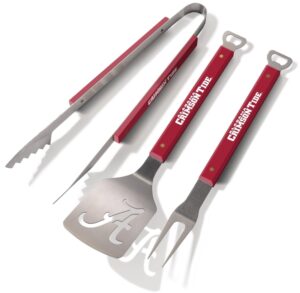From the Commissioner's Point of Emphasis, Page 19, 2006 Official Rules of Dixie Youth Baseball:
"A 2002 study by the American Sports Medicine Institute (ASMI) showed that youth baseball pitchers who throw curveballs or sliders have an increased risk of elbow and shoulder pain. Therefore, youth pitchers should avoid throwing breaking pitches in order to reduce the risk of future overuse injuries. Youth pitchers should develop proper mechanics as early as possible and include more year-round physical conditioning as their body develops. Muscles, tendons, and ligaments need time to 'cool down' after physical activity, just like they need to 'warm up' before activity."
Four paragraphs later:
"According to American Baseball Foundation board president and renowned orthopedic surgeon, James R. Andrews, 'The best pitchers in the country never make it to the majors because they're the ones in youth leagues and high school who are overused. We're seeing more injuries now because these kids are having more pressure to throw at higher velocities. They're throwing more sliders, more stress pitches. But the crux of the problem is we don't have enough quality pitchers to go around (in the majors) because the good quality pitchers are being hurt in the youth leagues.'" [Emphasis in original.]
I have not seen a rule book this year from Little League, Babe Ruth, Cal Ripken, Dizzy Dean, Pony or any other youth organization but I would not be suprised if each organization has something similar to that in the Dixie Youth Rule Book.
If James Andrews says that "stress" pitches create a risk of injury, that is a good indication that they do. However, no organization that I am aware of has enacted an outright ban on curves, sliders or any other pitch for that matter (except the beanball). I do not expect that any organization will do so either. First, the players, coaches and parents want to be able to throw them, even if they are dangerous. Second, how do you police it? While many umpires can tell the difference between a curve and a changeup, many cannot. Those umpires think anything that is not straight is a "curve." To ask those guys to tell the difference and enforce a ban would be asking too much. Likewise, league officials or anyone else watching from behind the backstop can't tell the difference in many cases. Quite frankly, it would probably be an unenforceable rule.
As an umpire with many years experience, I have personally seen kids who were outstanding pitchers when they were 11 or 12 who couldn't hold the ball up to the plate by the time they got to high school because they destroyed their elbows or shoulders (or both) by throwing too many breaking pitches. The simple truth is that it is left up to the coaches, the parents of individual players and the players themselves to limit the number of curves that they throw. As long as a scoreboard is used, I do not expect to see any significant changes.


